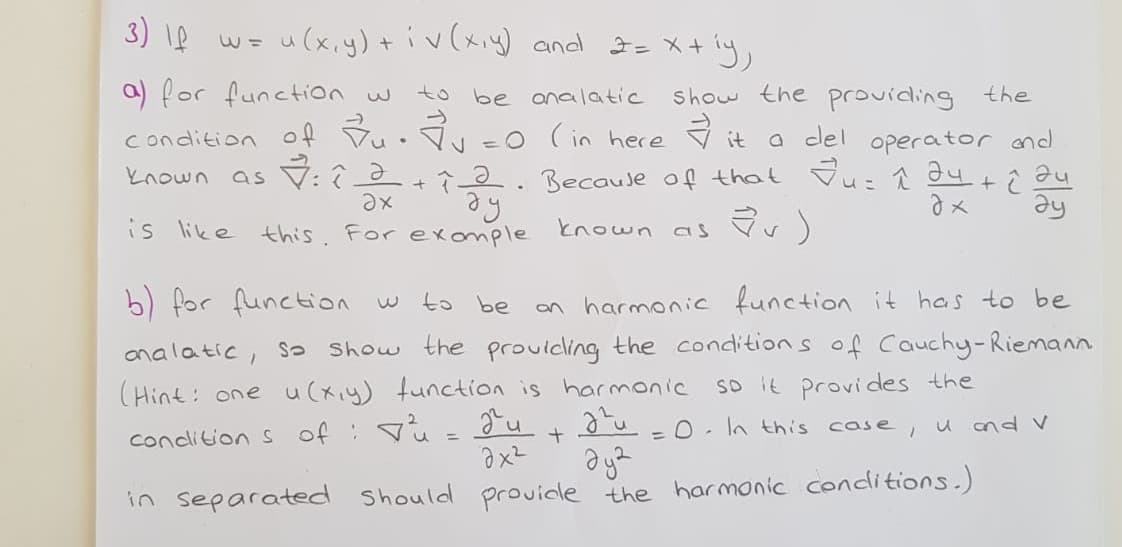b) for function w to be an harmonic function it has to be analatic, s Show the prouicling the conditions of Cauchy-Riemann (Hint: one u(xiy) tunction is harmonic so it provides the condlition s of : u = =0. In this case, u and v %3D in separated Should prouicle the harmonic conditions.)
b) for function w to be an harmonic function it has to be analatic, s Show the prouicling the conditions of Cauchy-Riemann (Hint: one u(xiy) tunction is harmonic so it provides the condlition s of : u = =0. In this case, u and v %3D in separated Should prouicle the harmonic conditions.)
Linear Algebra: A Modern Introduction
4th Edition
ISBN:9781285463247
Author:David Poole
Publisher:David Poole
Chapter1: Vectors
Section1.2: Length And Angle: The Dot Product
Problem 70EQ
Related questions
Topic Video
Question
only b option

Transcribed Image Text:3) \e w- ly,
u(x,y)+ iv(xiy) and I= X+
a) for function w to be analatic
show the providing the
a del operator and
known as V: 2+2. Because of that Vu: au +i au
ay
->
condition of Vu• Vv =0 (in here
it
is like this. For exonmple known as Vv)
b) for function w
to be
an harmonic function it has to be
analatic, s Show the prouicling the conditions of Cauchy-Riemann
(Hint: one u(xiy) function is harmonic
so it provides the
=0. In this case,
u and v
condition s of : u= gu
in separated Should provicle the harmonic conditions.)
Expert Solution
This question has been solved!
Explore an expertly crafted, step-by-step solution for a thorough understanding of key concepts.
Step by step
Solved in 2 steps with 2 images

Knowledge Booster
Learn more about
Need a deep-dive on the concept behind this application? Look no further. Learn more about this topic, advanced-math and related others by exploring similar questions and additional content below.Recommended textbooks for you

Linear Algebra: A Modern Introduction
Algebra
ISBN:
9781285463247
Author:
David Poole
Publisher:
Cengage Learning

Linear Algebra: A Modern Introduction
Algebra
ISBN:
9781285463247
Author:
David Poole
Publisher:
Cengage Learning